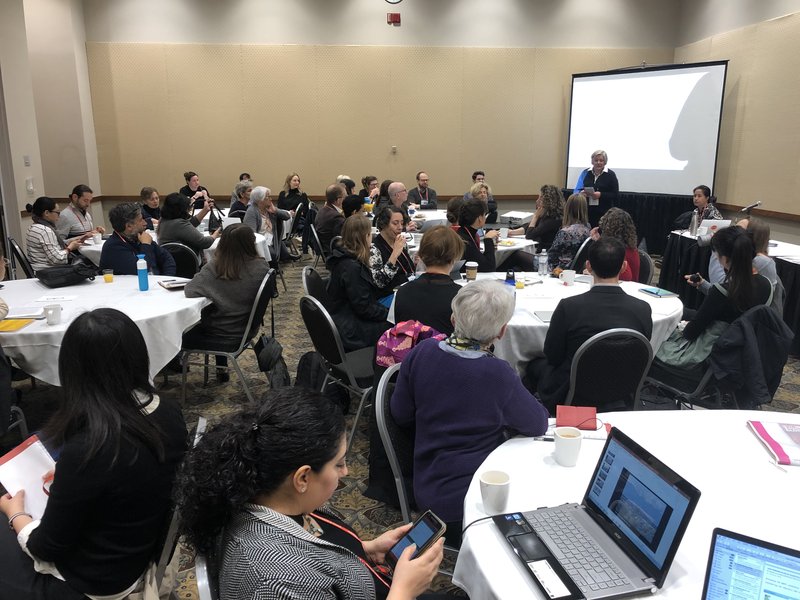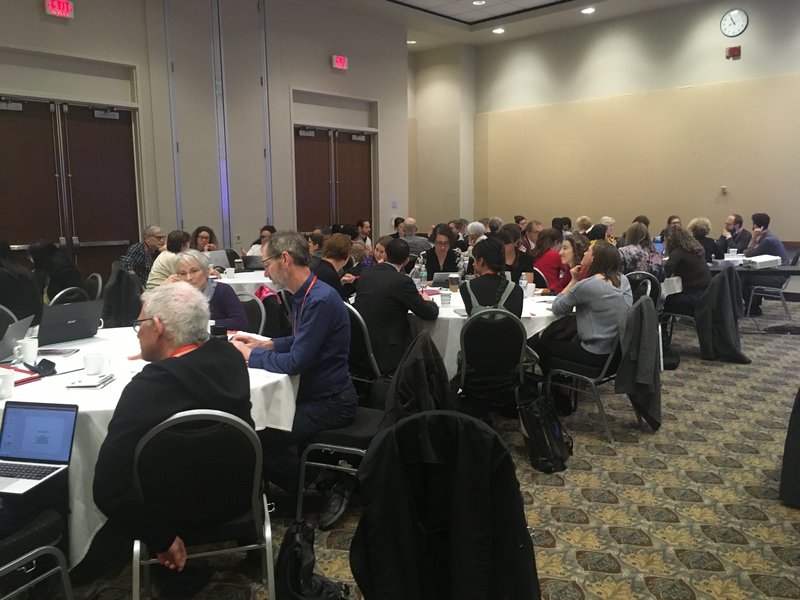
SAH/GAHTC Workshop - Teaching the Global
GAHTC Teacher to Teacher Workshop at SAH 2019
Saturday, April 27, 2019 9:00 a.m. – 4:15 p.m.
Organized by Ana María León, University of Michigan
SAH Oversight by Pauline Saliga, Executive Director SAH
Graduate Student Advisory Committee: Jia Yi Gu, UCLA and Jess Varner, MIT
Teaching global histories of architecture presents challenges and opportunities in today’s polarized political climate, particularly for graduate students and recent PhDs who are used to the extreme focus of doctoral research. Discussions on the global can be intimidating, particularly when approached as a virtually infinite expanse of knowledge. Difficult questions have to be addressed: How to structure a syllabus that is sufficiently comprehensive? How to teach outside of our area of expertise? How to disentangle the violence of empire and migration? How to discuss the nuances of class, gender, and race embedded in global conversations in today’s politicized classrooms? In this day-long workshop we addressed these issues by creating a space to discuss the pedagogical challenges of teaching “the global” in today’s conflicted classrooms.
Teaching the Global was organized in three sessions, each centered around a question generated by the title statement: what is the global, how and why is it global, and who is involved in the act of teaching it. Each session approached a different teaching component: the syllabus, the lecture, and the assignment. Guest speakers shared their experiences in producing these different components, their presentations were be followed by break-out groups for more in-depth conversation.
The workshop was open to graduate students and recent graduates in architectural and urban history programs interested in teaching more globally. Registration was required, the number of participants was be limited to ensure a productive session for everyone. Selected participants were be asked to bring the syllabus of an architectural history survey that they have taught, assisted in, or taken as a course.
Deliverables to GAHTC: After the presentation segment in each session, speakers and participants split into breakout groups and worked together on prompts generated by the presentations.

Session 1: What is the “global”?
Teaching Component: The Syllabus
The goal of this session is to identify challenges and approaches to organizing a course with a global approach. Rather than find a “one fits all” solution, the session seeks to lay out a set of recurrent questions and issues to be discussed throughout the day. Speakers were asked to present and explain their approach in putting together a lecture on the history of architecture that seeks to go beyond national or regional canons. They were asked to identify the main challenges in producing or revising an architecture history survey so that it fits “global” frameworks, including: how to define what “global” is, the use of thematic vs. chronological approaches, what to cover when you can’t cover everything, pressures of departmental context (architecture program vs. art history, etc.), reading assignments, and others. Rather than a “first day of class” syllabus walk-through, they were asked to provide a backstage view of their thought process in putting together their syllabi.
Speakers:
Anooradha Iyer Siddiqi, Columbia University, USA
Daniela Sandler, University of Minnesota, USA
Jiat Hwee Chang, National University of Singapore, Singapore
Moderated by Ana María León, University of Michigan, USA
Break-out group prompt: Participants were asked to bring a syllabus that they’ve taught, assisted in teaching, or taken as students, and ponder how the idea of the “global” is defined or outlined by that syllabus.
Notes from the break-out groups can be found here.

Session 2: How and why is it “global”? Teaching about Capital, Empire, and Migration
Teaching Component: The Lecture
How to teach the histories of colonialism and empire through their effects on the built environment? How to present the intermingling of different groups without reproducing narratives of cultural supremacy? How to discuss issues of cultural appropriation? How to discuss asymmetry in cultural exchanges? How to decolonize our lectures? The speakers in this session span time frames and geographies but are joined by their interest in the exchange of knowledge and cultural production, from modes of collective transferrence to more violent impositions and erasures. They presented a 5-7 minute extract of a lecture on the topic, focused on one specific case study (an object, building, and/or city) and how it provides a “global” narrative.
Speakers:
Mark Jarzombek, MIT, USA
Fernando Luis Martínez Nespral, FADU UBA, AR
Samia Henni, Cornell University, USA
Andrew Herscher, University of Michigan, USA
Moderated by Jia Yi Gu, UCLA, USA
Break-out group prompts: How to pick a case study? What do these case studies “do” within a lecture? How to incorporate context? Group participants discuss effective lecture strategies focusing on content and structure. Speakers are asked to work with the groups, each group should decide what they would like to produce in the time allotted, such as:
- a rubric or list of best practices and approaches for lecture writing and the use of case studies
- different approaches on how to introduce and what to include in a lecture
- different pedagogical approaches to the lecture, its structure, and how to break it up for a student audience
- a report on the conversation, or an alternative write-up of their choosing
These reports can be found here.
Session 3: Who is the global? Teaching about Race, Gender and Representation
Teaching Component: Class Assignments, Participation, and Dynamics
This session addresses the content of the course as well as the dynamics in the classroom. How do we represent the point of view of different cultural groups that are not part of our personal experience? How do we balance this experience and the distant that time and place create in our understanding? How do we teach in the context of politically contested campuses? Our speakers will present one class assignment prompt or an approach they have used to teach histories of architecture with a focus on race, gender, and class diversity in their courses, and how they introduce, encourage, and foster conversation on these topics.
Speakers:
Armaghan Ziaee, University of Cincinnati, USA
Charles Davis, II, University of Buffalo, USA
Marta Gutman, CCNY, USA
Moderated by Jess Varner, MIT, USA
Break-out group prompts: Have a conversation about the presentations and decide as a group to co-write on one of the following:
- different types of class assignments, or one collectively-produced, fleshed out assignment
- an annotated list of possible class assignments and things to consider in each one
- a report on the conversation, or an alternative write-up of their choosing
These reports can be found here.
Final conversation and wrap-up moderated by Ana María León


